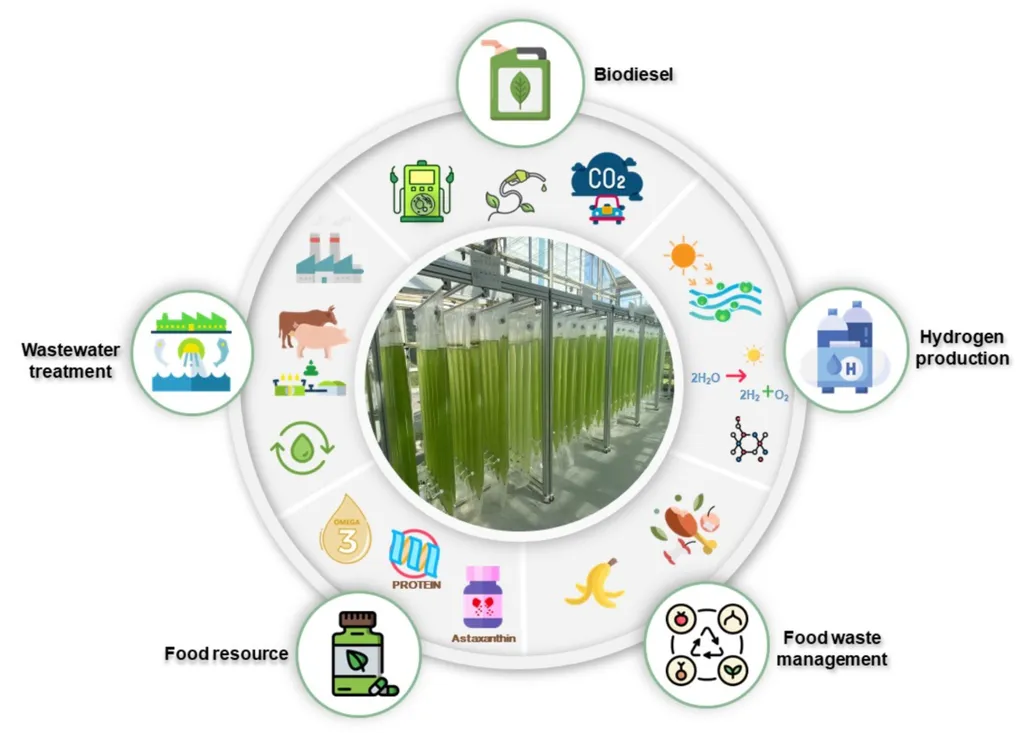In the quest for natural, sustainable food colorants, scientists are turning to an unlikely source: the tiny, often overlooked world of microalgae. A recent review published in *Advances in Food Science, Sustainable Agriculture, and Agroindustrial Engineering* highlights the potential of these microscopic organisms to revolutionize the food industry, offering vibrant, health-promoting pigments that could replace synthetic alternatives.
Microalgae, it turns out, are veritable factories of natural pigments like phycobiliproteins, carotenoids, and chlorophyll derivatives. These compounds not only lend foods a brilliant hue but also pack a nutritional punch, with antioxidant, anti-inflammatory, and other health-promoting properties. “Microalgae are a viable source of natural pigments for food applications due to their brilliant color and bioactivity,” says lead author Kurnia Rahmawati of Universitas Brawijaya. “They offer a sustainable and clean-label solution for the food industry.”
The challenge, however, lies in ensuring the stability of these pigments under various food processing conditions. Heat, acidity, and other factors can degrade the compounds, limiting their usefulness. But researchers are making strides in overcoming these hurdles. Biotechnological advances, such as strain selection, stress-induced cultivation, and metabolic engineering, are enhancing the pigments’ performance. “Various strategies, such as increasing thermal and pH resistance, help to promote their integration into food products,” Rahmawati explains.
The commercial implications for the agriculture sector are substantial. As consumer demand for natural, health-oriented foods continues to grow, so too does the market for sustainable, functional ingredients. Microalgae pigments could tap into this trend, offering food manufacturers a way to meet consumer preferences while also enhancing the nutritional profile of their products.
Moreover, microalgae cultivation is inherently sustainable. These organisms can be grown in seawater or wastewater, requiring minimal land and freshwater resources. This makes them an attractive option for farmers and agribusinesses looking to diversify their operations and reduce their environmental footprint.
The review also underscores the potential for microalgal pigments to play a role in functional foods—products designed to provide a health benefit beyond basic nutrition. With their combined colorant and nutraceutical qualities, these pigments could help food manufacturers create products that appeal to health-conscious consumers.
Looking ahead, the research suggests that microalgae could symbolize the future of the clean-label, health-oriented food industry. But to realize this potential, further research is needed to optimize the stability and performance of these pigments. As Rahmawati and her colleagues note, “Further research is needed to determine the stability of these pigments under food processing conditions.”
The findings could pave the way for innovative collaborations between agritech startups, food manufacturers, and research institutions. By harnessing the power of microalgae, these stakeholders could drive the development of a new generation of sustainable, functional foods. As the global food industry continues to evolve, the tiny world of microalgae may well hold the key to a vibrant, health-promoting future.

